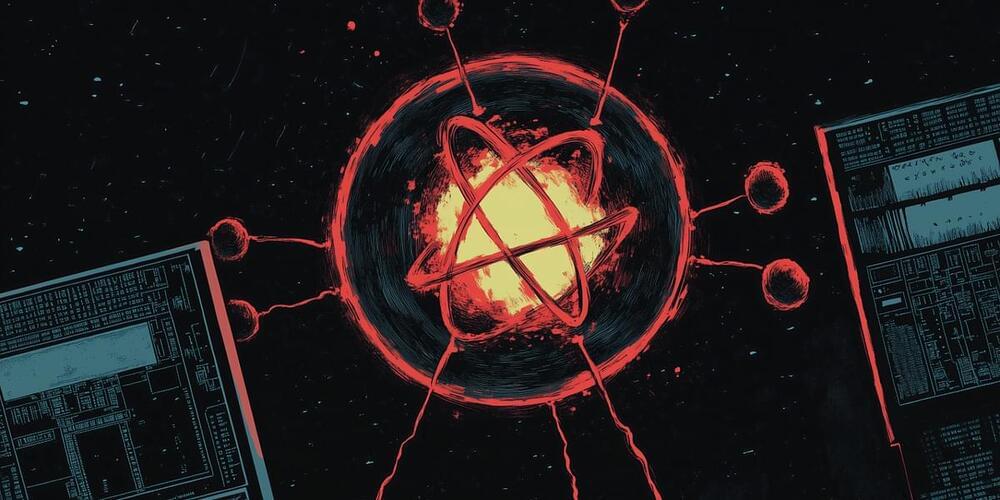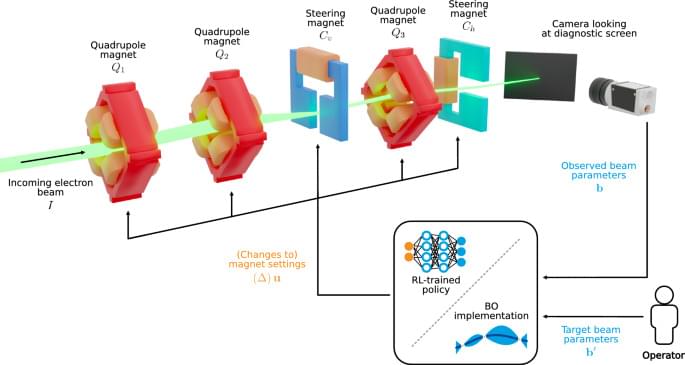And exploration of whether we can solve the Fermi Paradox without ever discovering alien civilizations.
My new clips and live channel:
My Patreon Page:
/ johnmichaelgodier.
My Event Horizon Channel:
And exploration of whether we can solve the Fermi Paradox without ever discovering alien civilizations.
My new clips and live channel:
My Patreon Page:
/ johnmichaelgodier.
My Event Horizon Channel:
An exploration of the question of whether the Sentinelese of North Sentinel Island live in a zoo hypothesis situation.
My Patreon Page:
/ johnmichaelgodier.
My Event Horizon Channel:
/ eventhorizonshow.
Music:
An exploration of a potential extinction event involving a quasar igniting in an old galaxy and sterlizing it of much of its life.
My Patreon Page:
/ johnmichaelgodier.
My Event Horizon Channel:
/ eventhorizonshow.
Music:
A groundbreaking study has provided experimental evidence suggesting a quantum basis for consciousness.
By demonstrating that drugs affecting microtubules within neurons delay the onset of unconsciousness caused by anesthetic gases, the study supports the quantum model over traditional classical physics theories. This quantum perspective could revolutionize our understanding of consciousness and its broader implications, potentially impacting the treatment of mental illnesses and our understanding of human connection to the universe.
Brian Keating is an experimental physicist at the UCSD, author of Losing the Nobel Prize, and host of the Into the Impossible podcast. Please support this podcast by checking out our sponsors:
InsideTracker: https://insidetracker.com/lex and use code Lex25 to get 25% off.
Athletic Greens: https://athleticgreens.com/lex and use code LEX to get 1 month of fish oil.
Magic Spoon: https://magicspoon.com/lex and use code LEX to get $5 off.
MasterClass: https://masterclass.com/lex to get 15% off.
Onnit: https://lexfridman.com/onnit to get up to 10% off.
EPISODE LINKS:
Brian’s Twitter: / drbriankeating.
Brian’s YouTube: / drbriankeating.
Books and resources mentioned:
Losing the Nobel Prize: https://amzn.to/3E6GSHI
Into the Impossible: https://amzn.to/3Fb6F2E
PODCAST INFO:
Podcast website: https://lexfridman.com/podcast.
Apple Podcasts: https://apple.co/2lwqZIr.
Spotify: https://spoti.fi/2nEwCF8
RSS: https://lexfridman.com/feed/podcast/
Full episodes playlist: • Lex Fridman Podcast.
Clips playlist: • Lex Fridman Podcast Clips.
OUTLINE:
0:00 — Introduction.
0:27 — Telescope.
5:51 — Beginning of the universe.
26:04 — Science and the Soviet Union.
31:30 — What it’s like to be a scientist.
50:26 — Age of the universe.
53:17 — Expansion of the universe.
1:01:18 — Gravitational waves.
1:04:30 — BICEP
1:29:45 — Nobel prize.
1:52:47 — Joe Rogan.
2:00:02 — Recognition in science.
2:08:11 — Curiosity.
2:15:59 — Losing the Nobel Prize.
2:28:53 — Galileo Galilei.
2:47:41 — Eric Weinstein.
3:06:01 — Scientific community.
3:23:42 — James Webb telescope.
3:28:42 — Panspermia.
3:32:12 — Origin of life.
3:37:40 — Aliens.
3:43:22 — Death and purpose.
3:47:34 — God.
3:53:30 — Power.
SOCIAL:
Twitter: / lexfridman.
LinkedIn: / lexfridman.
Facebook: / lexfridman.
Instagram: / lexfridman.
Medium: / lexfridman.
Reddit: / lexfridman.
Support on Patreon: / lexfridman.

Humans are not yet done cooking. We’re continuing to evolve and adjust to the world around us, the records of our adaptations written in our bodies.
We know that there are some environments that can make us unwell. Mountain climbers often succumb to altitude sickness – the body’s reaction to a significant drop in atmospheric pressure which means less oxygen is taken in with each breath.
And yet, in high altitudes on the Tibetan Plateau, where oxygen levels in the air people breathe are notably lower than lower altitudes, human communities thrive.

A groundbreaking study has provided experimental evidence suggesting a quantum basis for consciousness.
By demonstrating that drugs affecting microtubules within neurons delay the onset of unconsciousness caused by anesthetic gases, the study supports the quantum model over traditional classical physics theories. This quantum perspective could revolutionize our understanding of consciousness and its broader implications, potentially impacting the treatment of mental illnesses and our understanding of human connection to the universe.


Researchers have achieved a significant breakthrough in the synthesis of carbon nanotubes (CNTs) by developing a novel catalyst that allows for precise control over their atomic arrangement, known as chirality. This advancement paves the way for the creation of innovative semiconductor devices, addressing a challenge that has remained unresolved for over 30 years.

Kaiser, J., Xu, C., Eichler, A. et al. Sci Rep 14, 15,733 (2024). https://doi.org/10.1038/s41598-024-66263-y.